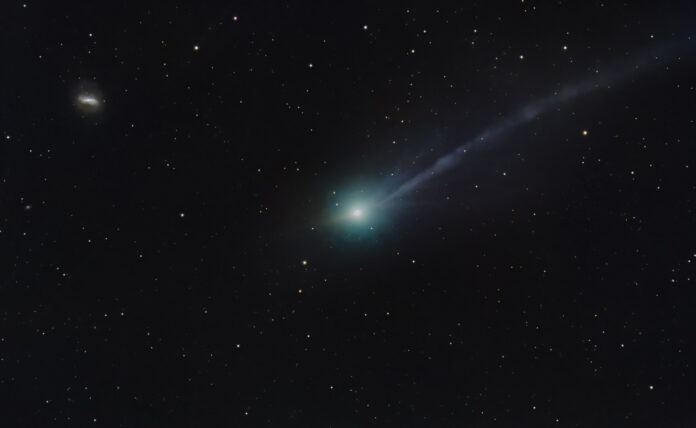
By Samuel Lopez | USA Herald
November 18, 2025
Every time humanity turns a telescope toward the interstellar object 3I/ATLAS, something new, unexpected, and scientifically disruptive emerges. But the image captured on November 16, 2025, by astrophotographer Satoru Murata using a Celestron EdgeHD 800 is different. It isn’t just beautiful. It is revealing—and it exposes structural and energetic behaviors that deepen the mystery surrounding this object.
Today, I applied the same forensic framework I’ve used in legal investigations—clarity enhancement, pattern extraction, comparative analysis, and evidentiary review—to this new image. The results raise profound questions about what 3I/ATLAS actually is.
A Coma Too Bright, Too Symmetrical, and Too Stable
The first anomaly appears in the coma—the glowing envelope surrounding the object’s nucleus.
Under enhancement, the coma displays:
- Perfect circular symmetry
- Unusually high luminosity
- A smooth, uniform structure with no apparent dust clumping
Natural comets rarely—if ever—produce a coma this stable. Dust outgassing normally creates mottling, layering, and chaotic texture. Instead, this coma looks like it is being sustained by a consistent energy source.
This aligns directly with Loeb’s 12th anomaly: jets and coma structures that do not smear despite rotation. Something is keeping this object’s emitted material in a tight, highly regulated configuration.


